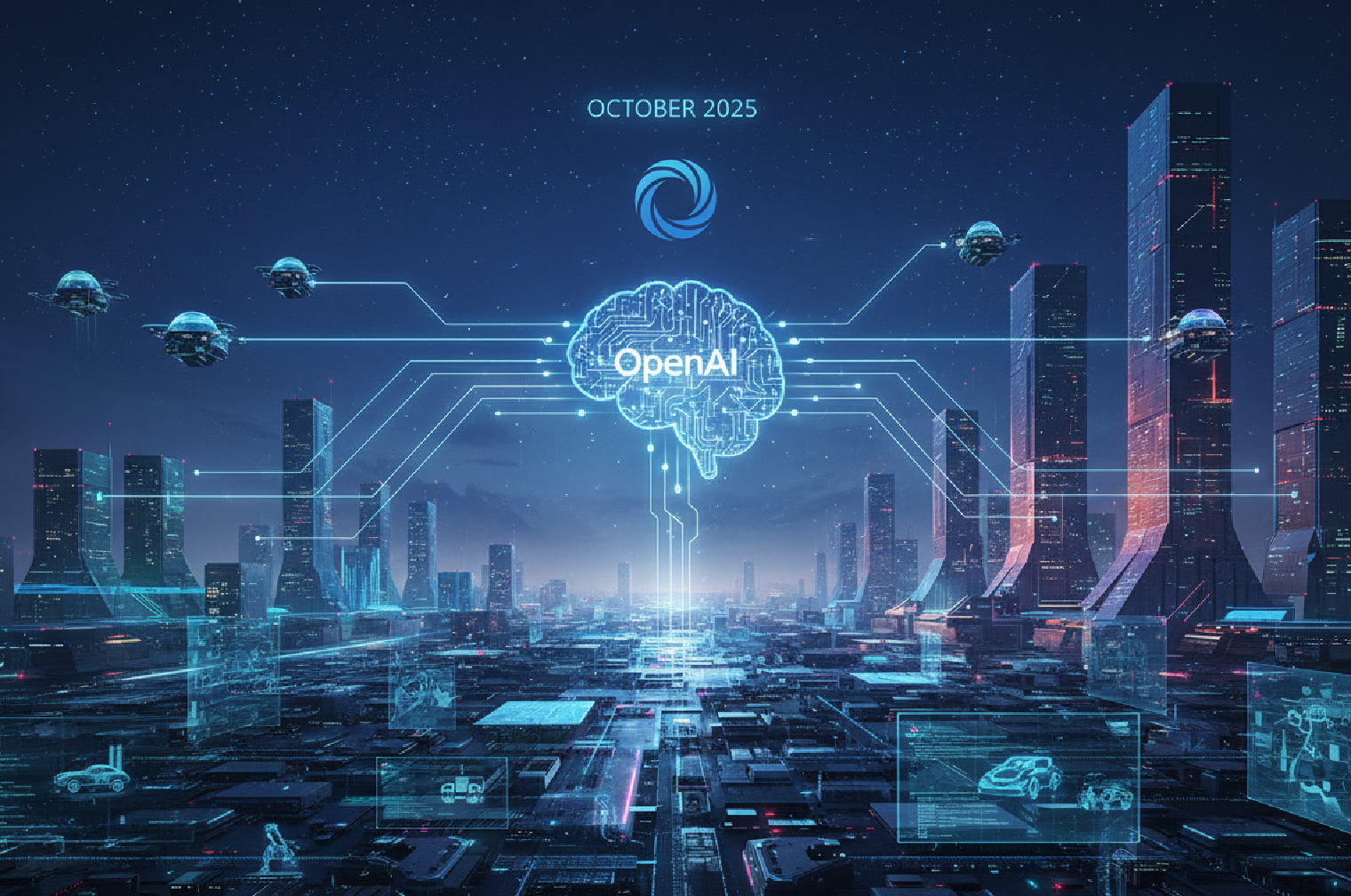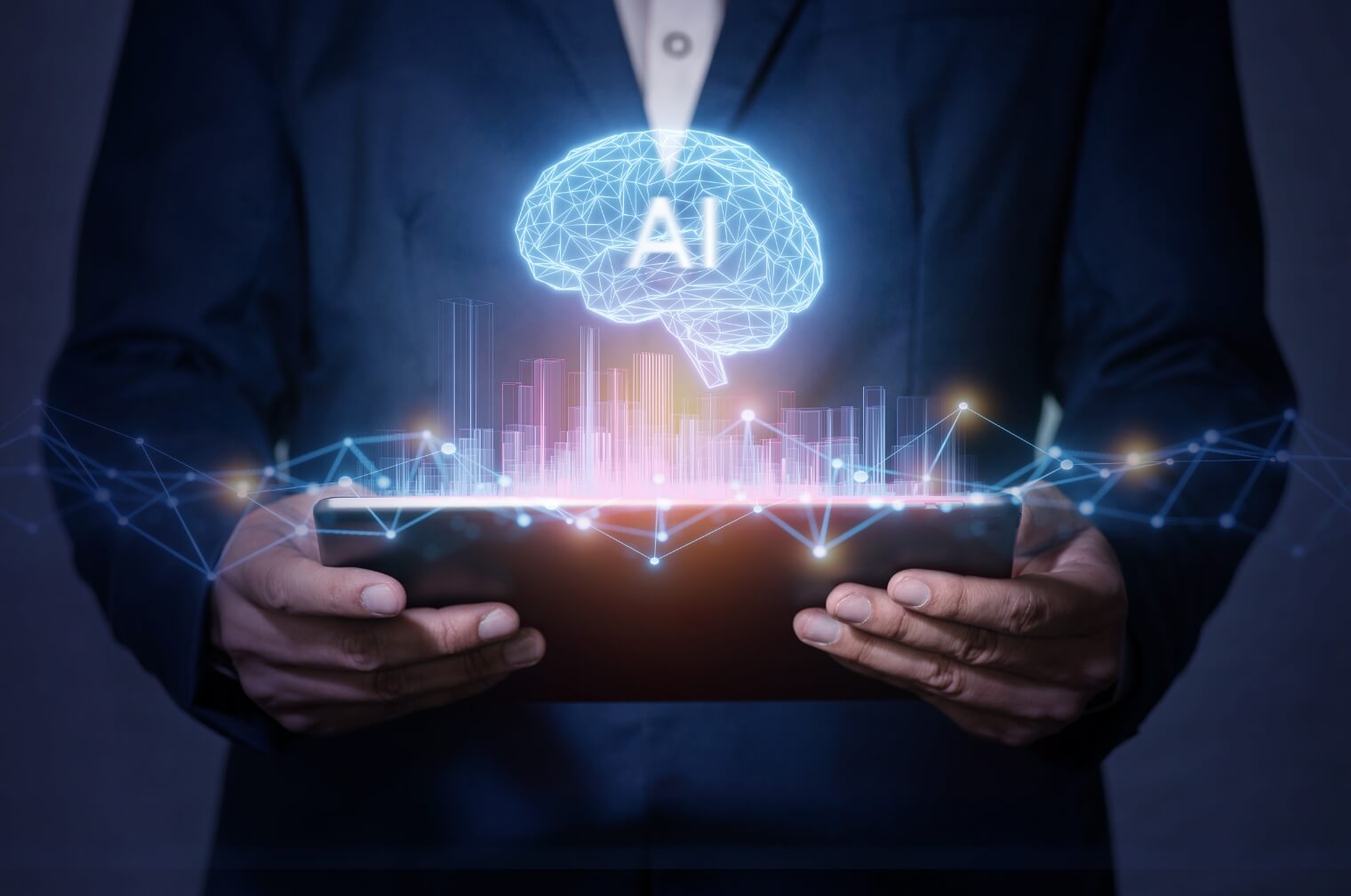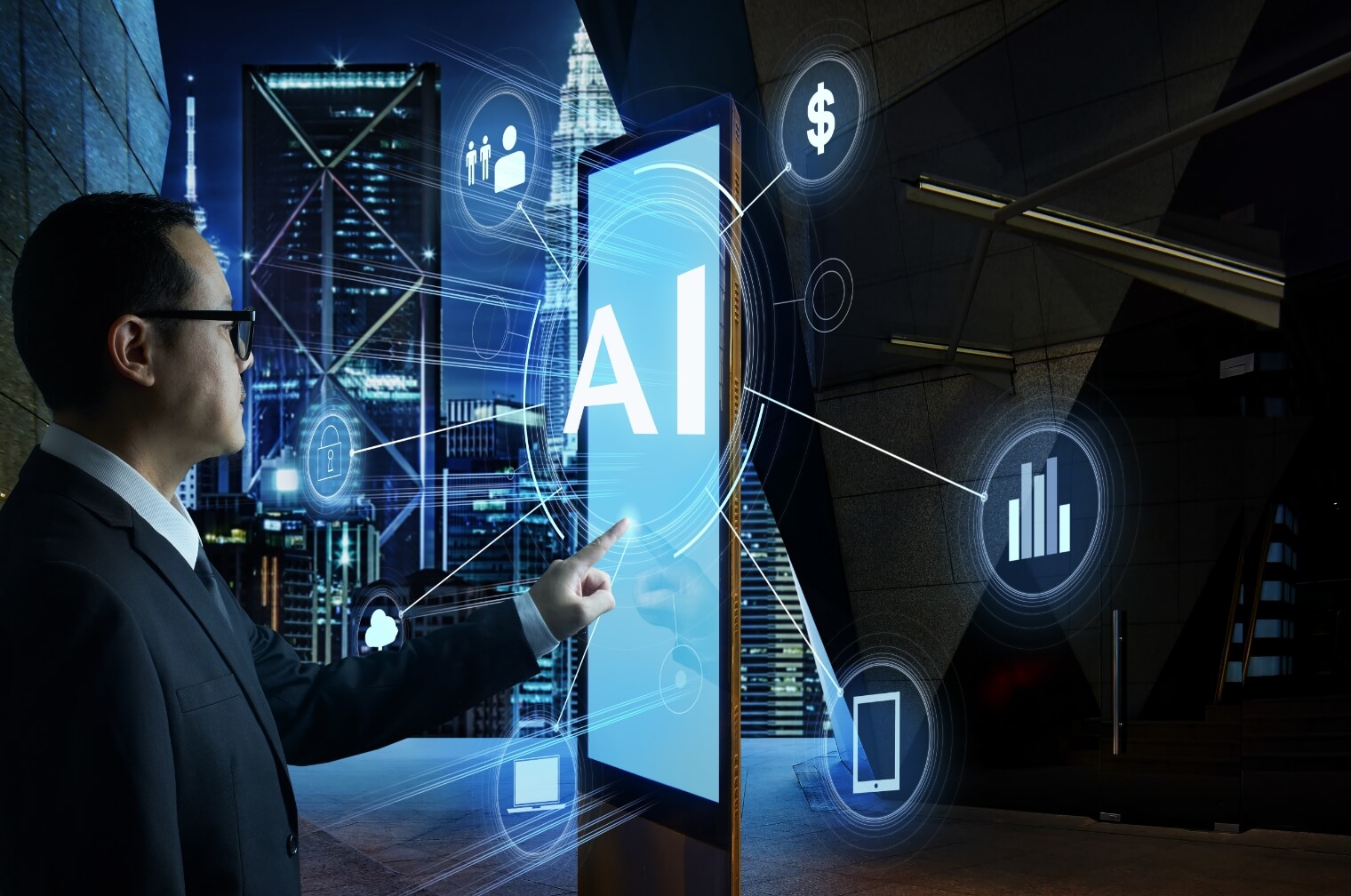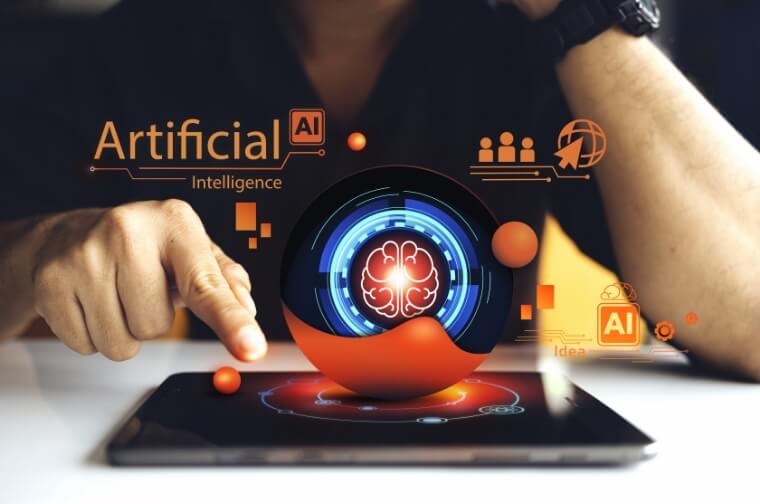Machine Learning and AI for revolution of Tech Companies are changing and streamlining businesses.
Enterprise leaders evaluating custom AI solutions now have a decisive moment. OpenAI’s October DevDay 2025 platform shift turns experimental pilots into production‑grade capabilities that are easier to build, govern, and scale across mission‑critical workflows.
The new stack spans:
- Apps in ChatGPT with a preview of the Apps SDK
- AgentKit for robust agentic orchestration
- Sora 2 in the API
- GPT‑5 Pro via API
- Gpt-realtime-mini for low‑latency voice
- gptimage1mini for cost-efficient visuals
- Codex is now generally available
This collectively enables reliable, secure, and extensible foundations for enterprise AI and AI-driven automation at scale.
For organizations prioritizing uptime, governance, and total cost of ownership, these releases reduce integration friction, compress time to value, and narrow vendor risk by anchoring innovation on widely adopted, managed services rather than bespoke scaffolding.
This is the practical inflection point where custom AI solutions move from proofs to platforms—with the component maturity and ecosystem support C-suite and product stakeholders have been waiting for.
Turn OpenAI Innovation into Action
Leverage OpenAI’s latest advancements to build your next Custom AI Solution with ViitorCloud’s expert team.
What OpenAI Announced
Apps in ChatGPT
OpenAI introduced Apps in ChatGPT, a native app layer that runs inside ChatGPT, and a preview Apps SDK so developers can design chat‑native experiences with conversational UI, reusable components, and MCP‑based connectivity to data and tools while reaching an audience of hundreds of millions directly in chat.
AgentKit
AgentKit extends this by giving teams a production‑ready toolkit—Agent Builder for visual, versioned workflows, a Connector Registry for governed data access, ChatKit for embeddable agent UIs, and expanded Evals for trace grading and prompt optimization—so agents can be built, measured, and iterated with enterprise rigor.
Codex
Codex is now generally available with developer‑friendly integrations and enterprise controls, aligning agentic coding and code‑generation use cases with standardized governance and deployment patterns for engineering teams.
GPT‑5 Pro via API
On the model side, GPT‑5 Pro arrives in the API for tasks where accuracy and deeper reasoning matter—think regulated domains, complex decision support, and long‑horizon planning—enabling services that must explain, justify, and withstand audit, not just autocomplete.
gpt‑realtime‑mini
For voice, gpt‑realtime‑mini offers low‑latency, full-duplex speech interactions and is about 70% less expensive than the larger voice model, making natural voice UX viable for high‑volume support, concierge, and contact‑center automations. A practical scenario is a voice concierge that authenticates callers, looks up orders, and resolves intents in seconds via SIP/WebRTC, with observability and redaction applied upstream for compliance and quality assurance at scale.
gpt‑image‑1‑mini
For creative and product pipelines, gpt‑image‑1‑mini cuts image generation costs by roughly 80% versus the larger image model, which changes the unit economics for iterative concepting and catalog enrichment workflows across retail, marketplaces, and marketing operations.
Sora 2 in API
Sora 2 in API preview adds advanced video generation to application stacks, enabling controlled, high‑fidelity assets for training, product explainers, and promotional content, with teams able to prototype short videos and route them through brand safety checks and legal sign‑off before distribution.
Together, these updates let enterprises design composite systems. Apps in ChatGPT for front‑ends, AgentKit for orchestration, GPT‑5 Pro for reasoning, and Sora 2/gpt‑image‑1‑mini for rich media can be mapped to use cases like KYC automation, claims triage, controlled catalog enrichment, and multilingual support bots.
Check: AI Co-Pilots in SaaS: How CTOs Can Accelerate Product Roadmaps Without Expanding Teams
Scale Smart with Custom AI and Automation
Integrate OpenAI-powered intelligence into your workflows with our Custom AI Solution and AI Automation services.
Why This Matters Now
OpenAI reports platform scale of more than 4 million developers, 800 million+ weekly ChatGPT users, and approximately 6 billion tokens per minute on the API, a footprint that signals mature tooling, hardened operations, and a vibrant ecosystem of patterns, components, and skills that reduce integration risk and speed up delivery.
For CIOs planning phased adoption in FY26, this ecosystem density shortens learning curves, supports standardized controls, and improves hiring and partner availability, which directly improves time‑to‑value and mitigates vendor concentration risk.
The AMD–OpenAI strategic partnership commits up to 6 gigawatts of AMD Instinct GPUs over multiple years, beginning with a 1‑gigawatt rollout in 2026, adding meaningful supply to accelerate availability and stabilize latency for bursty and near‑real‑time inference demands as enterprise adoption grows.
Reporting from Reuters and the Wall Street Journal underscores the deal’s multi‑billion‑dollar trajectory and execution milestones, which should influence cost curves and capacity planning for AI‑first architectures beyond a single vendor stack.
For technology leaders, this translates into improved confidence in capacity headroom and planning for multi‑tenant loads, seasonal spikes, and global rollouts of voice and agentic experiences without relying on brittle, bespoke infrastructure.
From Pilot to Production
Production‑grade AI requires more than a model choice, which is why AgentKit’s evaluation and governance primitives—datasets for evals, trace grading for end‑to‑end workflows, automated prompt optimization, and third‑party model support—are consequential to building measurable, composable agent systems from day one.
A robust blueprint couples this with retrieval‑augmented generation for fresh, governed context, model‑agnostic evaluation harnesses for ground‑truth scoring, and role‑based guardrails that separate customer data entitlements from tool‑execution permissions for safer agent behaviors under stress.
Safety, compliance, and governance must be layered, with OpenAI’s October 2025 “Disrupting malicious uses of AI” update offering directional reassurance that abuse is being detected and disrupted across threat categories with transparent case studies and enforcement.
On the platform side, Azure OpenAI’s content filtering system and Azure AI Language PII detection provide model‑adjacent controls to flag harmful content and identify/redact sensitive fields as part of standardized pipelines that combine upstream filtering, domain‑specific red teaming, and human‑in‑the‑loop review.
For voice and real‑time experiences, OpenAI’s gpt‑realtime stack and Azure Realtime API patterns illustrate how to achieve low‑latency UX while instrumenting observability, retention policies, and transcript governance in regulated environments.
Read: AI Consulting and Strategy: Avoiding Common Pitfalls in Enterprise AI Rollouts
Build the Future with OpenAI and ViitorCloud
Transform your business operations through our Custom AI Solution and AI Automation expertise tailored to your goals.
Partnering with ViitorCloud
ViitorCloud offers focused consulting sprints that turn these releases by OpenAI into execution: GPT‑5 Pro reasoning service blueprints for regulated decision support, AgentKit‑powered agent design and evals, Sora 2 pilot pipelines for safe marketing and training assets, and voice UX prototyping with gpt‑realtime‑mini—all mapped to measurable operational KPIs and governance checkpoints.
The approach emphasizes rapid proof cycles tied to a prioritized workflow, such as claims triage or multilingual support, followed by hardening with eval datasets, retrieval, PII guardrails, and targeted human review gates before scaling across regions or business units.
Delivery teams operate from India, aligning IST workdays for strong overlap with EMEA and APAC while remaining deeply connected to India’s technology ecosystem and serving global clients with a follow‑the‑sun model for responsiveness and velocity.
Request a discovery workshop with ViitorCloud’s AI team to translate these October 2025 capabilities into enterprise results with confidence and speed, then scale what works across customer service, back‑office automation, and analytics augmentation.









